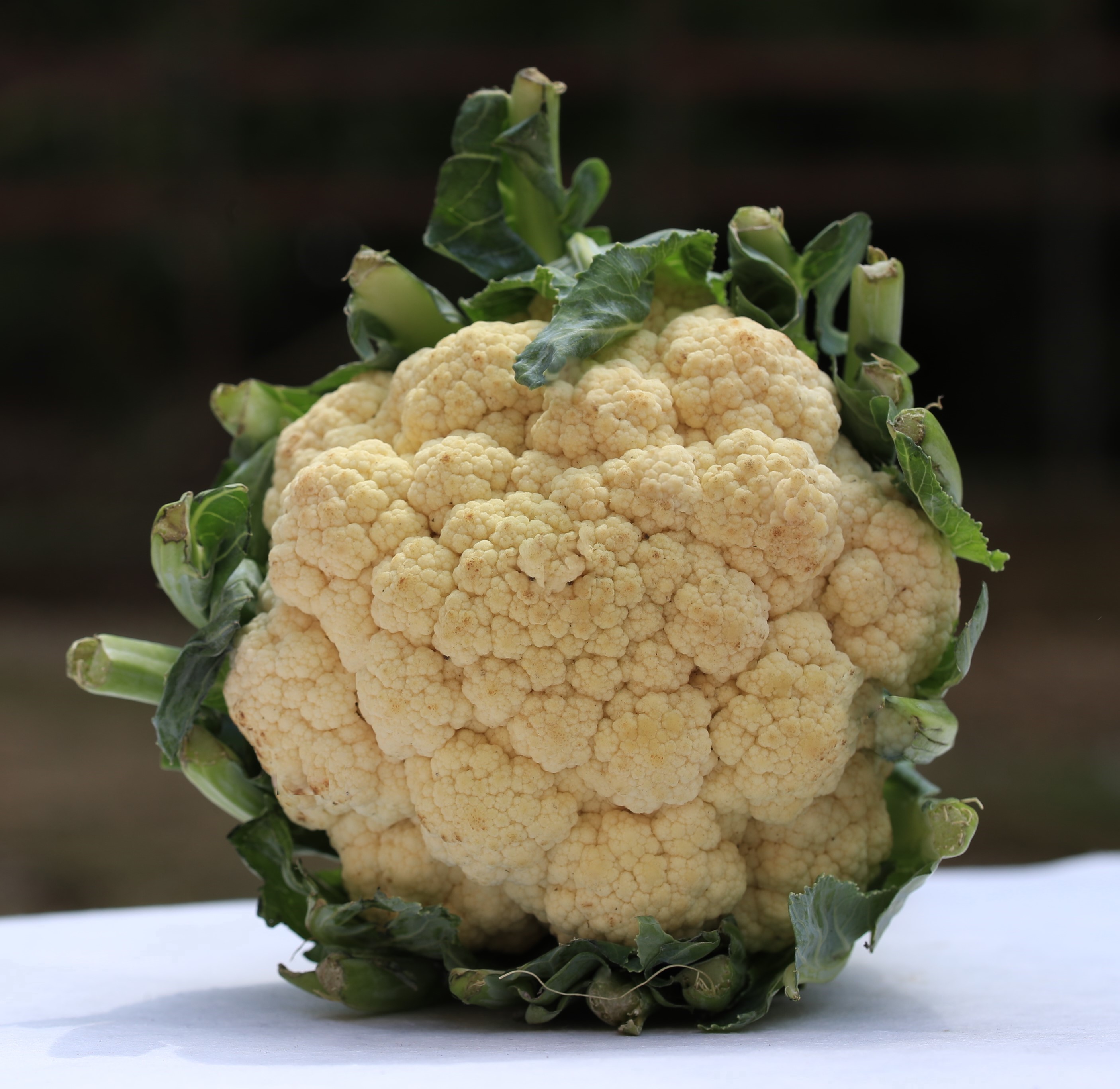

Brassica oleracea var. botrytis L.
|
Cauliflower is a cruciferous vegetable belonging to the family Brassicaceae. The part of the plant that one consumes is the flower or inflorescence which is highly appreciated for its taste. It is an excellent source of vitamins and minerals and also a rich source of bioactives like - Glucosinolates (neoglucobrassicin, glucoiberverin), flavonoids (quercetin) and phenolics (p-Coumaric acid). It enhances the expression of apoptotic enzymes which possesses anti-cancer activity. Mode of Consumption : Fried, pickled, used in soup |
| Plant Details | Agro-climatic Zone | Vernacular Names | Pictures |
| Scientific Name: Brassica oleracea var. botrytis L. Family: Brassicaceae Burnett Class: Magnoliopsida Order: Capparales Genus: Brassica L. Fruiting Season: All round the year Parts: Flowering head |
|
Andhra Pradesh : Kaliflower Assam : Phul kobi Bihar : Phool gobi Himachal Pradesh : Phool gobi Karnataka : Hoo kosu Kerala : Kaliflower Punjab : Phool gobi Tamil nadu : Kaliflower Uttar Pradesh : Phool gobi Uttarakhand : Phool gobi |
 Flowering head |
| Compound/Extract | Activity | Mode of Action | Marker/References |
| Cauliflower extract | Anticancer | Cauliflower extract helps in induction of estradiol metabolism and the related cytochrome P-450 system, expression of cyclin-dependent kinase-6 and induction of G1 cell and p53 dependant apoptosis cycle arrest. | Cytochrome P-450, cyclin-dependent kinase-6 and p53[2] |
| Major Class | Metabolites (Content of bioactives: mg/100g Fresh Weight) |
| Flavonoid | Kaempferol: 0.08 mg/100g, Quercetin: 0.07- 0.261 mg/100g[1] |
| Glucosinolate | Glucoiberverin: 3.66-5.24 mg/100g, Indole-3-carbinol: 0.103-0.118 mg/100g, Neoglucobrassicin: 10.08- 19.91 mg/100g[1] |
| Phenolic acid | p-coumaric acid: 72 mg/100g, Sinapic acid: 3.93 mg/100g, Vanillic acid: 4.18 mg/100g[1] |
| Effect | Observation | DOI |
| Human clinical studies | Significant modification in quality and quantity of gut microbiota (Eubacterium hallii, Phascolarctobacterium faecium, Alistipes putredinis, and Eggerthella spp.) | DOI: 10.3945/jn.109.108191 |
| Disease | Formulation | Reference | Author | TKDL |
| Information from Wealth of India | Reference |
|
CSIR(1948).The Wealth of India, Raw materials,Vol.-I ,P.220, New Delhi, India |
| 4.2, 04.2.1, 04.2.1.1, 04.2.1.3, 04.2.2.3, 04.2.2.5, 04.2.2.6, 04.2.2.8 |
| CSIR-North East Institute of Science and Technology, Jorhat-6, Assam, India
CSIR-Institute of Himalayan Bioresource Technology, Palampur-61,Himachal Pradesh, India |